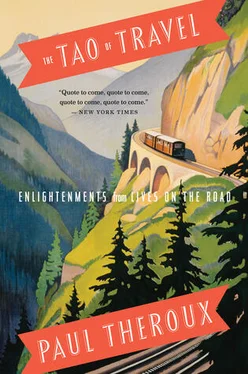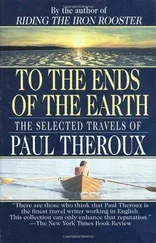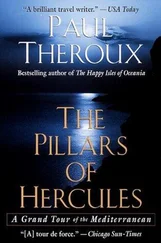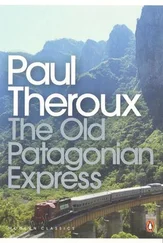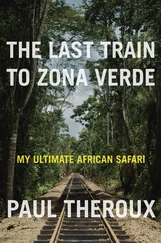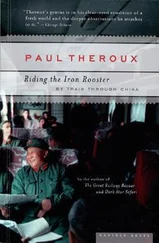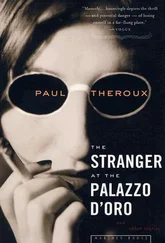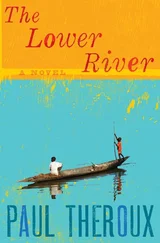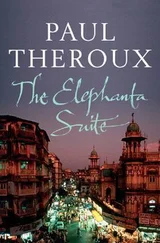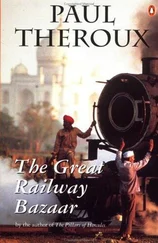The paradox of the passage of a traveler's time, and its meaning, was summed up beautifully by Doris Lessing in the first volume of her autobiography:
Once I was making a mental list of all the places I had lived in, having moved about so much, and soon concluded that the commonsense or factual approach leads to nothing but error. You may live in a place for months, even years, and it does not touch you, but a weekend or a night in another, and you feel as if your whole being has been sprayed with an equivalent of a cosmic wind.
— Under My Skin (1994)
Here are some notable sojourns, from the longest to the shortest:
Sir John Mandeville: Thirty-four years (1322–1356) traveling in Europe, Asia, and Africa. But Mandeville may not have existed, or if he did exist, as an English knight, he probably never left England. Although his Travels is full of incident and amazing sights, it is undoubtedly a massive example of literary cannibalism from the work of others: plagiarism, invention, legends, boasts, and tall tales culled from the works of travelers, borrowers, romancers, and other plagiarists.
Ibn Battuta: Twenty-nine years altogether (1325–1354). He went on the haj to Mecca in 1325 and kept going in Asia, Africa, and the Middle East. He was the only known medieval traveler who visited the countries of every Muslim ruler of his time, as well as such infidel places as Constantinople, Ceylon, and China. He described both Khan-Baliq (Beijing) and Timbuktu. Known in the Muslim world (and in particular his native Morocco), he came to prominence in English-speaking countries only after a translation of part of his Travels appeared in 1829. Called the greatest traveler the world has ever seen, Ibn Battuta's journeying has been estimated at about 75,000 miles.
He mistook the Niger for the Nile, but nevertheless received an enlightenment one day in 1352:
I saw a crocodile in this part of the Nile [Niger], close to the bank; it looked just like a small boat. One day I went down to the river to satisfy a need, and lo, one of the blacks came and stood between me and the river. I was amazed at such lack of manners and decency on his part, and spoke of it to someone or other. He answered, "His purpose in doing that was solely to protect you from the crocodile, buy placing himself between you and it."
Marco Polo: Twenty-six years in total (1271–1297), seventeen of them in the service of Kublai Khan. In spite of this, Marco seems not to have noticed — certainly he never mentions — that the Chinese drink tea, use printing, and that they'd built the Great Wall.
"Marco Polo was not merely a traveler," Laurence Bergreen writes in Marco Polo: From Venice to Xanadu, "he was a participant in the history of his times." Bergreen identifies the reality behind some of the marvels (the humanlike "monkeys" in Sumatra were Pygmies, the dark unicorn a rhino, and so forth) and makes a case for Marco's omitting any mention of the Great Wall: "It was constructed during the Ming Dynasty (1368–1644), long after Marco Polo's day."
Marco does mention Buddhism and describes Buddha, calling him by his Mongol title, "Burkhan," the equivalent of "Enlightened." Nicknamed Il Milione for his reputation as a recounter of marvels (see Chapter 20, "Imaginary People"), he dictated his book to a well-known writer of romances, Rustichello (of Pisa), in 1298 while in prison for two years in Genoa. Rustichello may have overegged some of the events and descriptions, but the Travels (the first printed version appeared in Nuremberg in 1477) is still an astonishing eyewitness account of the then-known world and was regarded in Europe for centuries as a geography of Asia. Columbus carried an annotated copy with him on his voyages, which persuaded him in the Caribbean that he had reached the offshore islands of India, which is how the Indies got its name and why the natives of the hemisphere are known as Indians.
Xuanzang: Seventeen years (629–645). This Tang Dynasty monk, scholar, translator, and indefatigable traveler (his name is also rendered Hsuan-tsang), was twenty-seven when he set off on his journey to the West (the title of the Ming Dynasty novel that dramatized his travels), resulting in The Great Tang Dynasty Record of the Western Regions. This incomparable record of travel contains a precise account of distances, landscapes, commerce, and the numerous cultures, beliefs, and peoples along the Silk Road, to the edge of Persia, to what is now Afghanistan, Pakistan, India, and Nepal. Xuanzang's journey of thousands of miles is so well documented it enabled archaeologists of the nineteenth and twentieth centuries to find and excavate these ancient sites (see Chapter 13, "It Is Solved by Walking").
Lafcadio Hearn in Japan: The last fourteen years of his life, from 1890 to 1904. Hearn had traveled before this to the West Indies and elsewhere, and though he was not traveling the whole time he was in Japan, he lived as an alien, collecting grievances and insights into Japanese life, under his new name, Koizumi Yakumo.
William Bartram: Four years, 1773 to 1777, for his pioneering travels in the American South. There he botanized, gathered specimens, and studied the lives and habits of Native Americans for his groundbreaking and influential study of 1791, Travels Through North and South Carolina, Georgia, East and West Florida, the Cherokee Country, the Extensive Territories of the Muscogulges or Creek Confederacy, and the Country of the Chactaws. Containing an Account of the Soil and Natural Productions of Those Regions; Together with Observations on the Manners of the Indians, often called simply Bartram's Travels, a book read and praised by the Romantic poets Coleridge and Wordsworth.
Fanny Trollope in America: Almost four years (1827–1831). During that time she was in and out of the Nashoba settlement, an institution for the education of slaves who were hoping to be emancipated, but "one glance sufficed to convince me that every idea I had formed of the place was as far as possible from the truth. Desolation was the only feeling." She removed herself upriver to Cincinnati ("Porkopolis" — pigs in the street), where she put on "theatricals," and then built and opened a "bazaar," renting space to stallholders to sell "fancy goods." When this business failed, she did what many desperate people have done in search of solvency: she wrote a travel book, The Domestic Manners of Americans ("six hundred pages of griffonage" — scribblings), most of it trashing Americans as overfamiliar slobs and hypocrites who did nothing but spit. There is so much spitting in Domestic Manners, she could have called it Great Expectorations.
Yet this clearsighted book (greatly admired by Mark Twain) is not an account of city-haunting and sightseeing in America but a work "describing faithfully the daily aspect of ordinary life." She went on to write many more books, including a number of novels, and though her son Anthony (whom, at age twelve, she left in England) complained in his Autobiography that she was "much from home or too busy to be bothered," Fanny remained an inspiration to him and showed him the way to be a novelist and traveler. We would not have Anthony Trollope's great novels or his masterpiece of travel, The West Indies and the Spanish Main, were it not for his mother's bold example.
Fanny's conclusion about Americans: "I do not like them. I do not like their principles, I do not like their manners, I do not like their opinions."
Henry Morton Stanley crossing Africa: Three years, 1874 to 1877, for Through the Dark Continent. He traveled from east to west, Zanzibar to the heart of Africa and down the Congo River to Matadi and the Atlantic Ocean. A few years later he crossed Africa from west to east, a two-year trip.
Читать дальше
